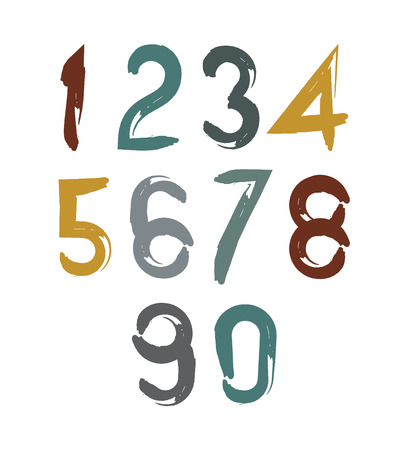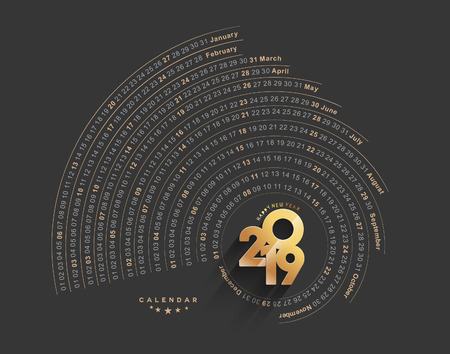1. Introduction to Palmistry and the Importance of Palm Lines
Palmistry, also known as chiromancy, has long held a fascinating place within British society. Rooted in ancient traditions that trace back to India, China, and Egypt, the practice found its way into the United Kingdom during the Middle Ages. Throughout history, British culture has woven palmistry into folklore, literature, and even everyday conversation, with references appearing everywhere from Shakespearean plays to Victorian parlours. Despite shifts in scientific understanding over the centuries, palmistry continues to intrigue both sceptics and believers alike across the UK.
The crux of palmistry lies in the study of palm lines—those unique creases found on every individual’s hands. These lines are thought to reveal insights about personality, fate, and life’s potential paths. In modern Britain, while many approach palm reading with a sense of fun or curiosity rather than strict belief, questions about the nature and origins of these lines persist. Are they truly fixed from birth, as some traditions suggest? Or do they change over time in response to our experiences? This question is not only fundamental for palmists but also sparks broader discussions about identity and destiny within British cultural discourse.
Biological Foundations: How Palm Lines Form Before Birth
The origins of palm lines, or palmar creases as they are medically termed, can be traced back to a fascinating interplay between genetic inheritance and the intrauterine environment during foetal development. British medical research, particularly studies conducted by the NHS and leading universities such as Oxford and UCL, has contributed significantly to our understanding of this process. Palmar creases begin to form around the 12th week of gestation, coinciding with the period when the foetus starts moving its hands. These early movements stimulate the skin to fold in certain patterns, laying down the foundations for what will become an individual’s distinctive palm lines. The formation of these creases is largely governed by genetics; variations in DNA dictate both the number and prominence of lines. However, environmental factors within the womb—such as foetal positioning, amniotic fluid volume, and even maternal health—can also influence their eventual shape.
| Factor | Influence on Palm Lines | British Medical Insight |
|---|---|---|
| Genetics | Determines basic pattern and depth of lines | Identified through twin studies and family traits (NHS Genetics Review) |
| Foetal Movement | Encourages crease formation at points of flexion | Documented in UCL Department of Human Developmental Biology research |
| Womb Environment | Can subtly alter line symmetry or length | Referenced in Royal College of Paediatrics & Child Health reports |
| Maternal Health Factors | Potential impact on overall skin development | Cited in BMJ articles on prenatal influences (2023) |
This intricate balance between inherited codes and external conditions explains why palm lines are unique to each person yet show familial similarities. Notably, certain congenital conditions—such as Down’s syndrome—are associated with specific palm line formations, providing a diagnostic tool for British clinicians. In summary, while palm lines are substantially set before birth due to biological programming, there is scope for minor variation based on the dynamic environment experienced by the developing foetus.

3. Changes Over Time: Do Palm Lines Really Stay the Same?
It is a common belief that palm lines, or palmar creases, are set from the moment of birth and remain unchanged throughout one’s lifetime. However, scientific research and case studies paint a more nuanced picture. While the fundamental structure of major palm lines—such as the heart line, head line, and life line—is largely established in the womb, there is credible evidence to suggest that these lines can undergo subtle changes as we age.
Longitudinal studies conducted by dermatologists and geneticists in the UK and internationally have tracked individuals from infancy through adulthood. The consensus emerging from this research is that while the broad pattern of palm creases remains consistent, minor alterations can occur in response to various factors. These include natural skin growth during childhood, hormonal changes in adolescence, and physical wear or injury throughout adult life. For instance, a notable study published in the British Journal of Dermatology documented slight shifts in crease depth and length over several decades, particularly among participants engaged in manual labour or those who experienced significant weight fluctuations.
Moreover, medical case reports occasionally note marked changes in palm lines associated with certain health conditions. Some genetic disorders can lead to atypical crease formation after birth, while severe skin diseases or trauma may permanently alter existing lines. However, such cases are exceptions rather than the rule. For most people, any transformations are gradual and subtle, often going unnoticed without close inspection or photographic comparison over time.
In summary, while your palm lines do not dramatically change shape or position once established at birth, they are not entirely immutable. Environmental influences, lifestyle choices, and even certain medical events can leave their mark—albeit usually faintly—on these familiar patterns. This evolving understanding challenges the notion of fixed destiny written in our palms and invites us to see them instead as living records of our individual journeys.
4. Popular Beliefs versus Scientific Evidence in the UK
In the United Kingdom, palmistry has long captured the public imagination, often featured at village fêtes, seaside piers, and in popular media. Many Britons grow up hearing that their palm lines are unique, unchangeable markers of fate or character, and that a skilled reader can interpret these lines to predict future events or reveal hidden traits. However, when these beliefs are scrutinised alongside current scientific research, clear discrepancies emerge.
Contrasting British Beliefs with Scientific Findings
| Aspect | Popular British Belief | Scientific Evidence |
|---|---|---|
| Origin of Palm Lines | Palm lines are fixed at birth and reflect destiny or personality | Palm creases begin developing in utero but may subtly change due to genetics, skin elasticity, and hand usage over time |
| Permanence | Palm lines do not change throughout life | Lines can deepen, fade, or shift slightly due to age, manual labour, or certain medical conditions (e.g., Dupuytren’s contracture) |
| Predictive Power | Lines can predict health, fortune, or significant life events | No peer-reviewed studies support predictive claims; palmistry lacks scientific validation as a diagnostic or prognostic tool |
| Cultural Role | Palm readings are part of local fairs and social gatherings for entertainment and guidance | Anthropologists note the value of palmistry as a folk tradition rather than a scientifically endorsed practice |
Why Do Discrepancies Persist?
The persistence of traditional beliefs about palm lines in the UK can be attributed to several factors. Firstly, palmistry offers a sense of personal narrative and reassurance—qualities that scientific explanations may lack. Secondly, British culture often embraces eccentricity and folklore, providing fertile ground for such traditions to thrive alongside more evidence-based worldviews. Finally, the entertainment value of palm reading at social events ensures its continued presence despite the absence of scientific endorsement.
5. Cultural Impact: From Local Fairs to Mainstream Media
Palmistry, or the reading of palm lines, has woven itself into the tapestry of British culture in intriguing ways. At local fairs and seaside piers across the UK, you will often find palm readers offering light-hearted glimpses into people’s futures for a modest fee. These settings are typically informal, blending entertainment with curiosity, and have become an almost nostalgic fixture in British leisure culture. The image of the fortune-teller—complete with crystal ball and velvet drapes—is iconic, evoking a sense of playful mystery that many associate with summer holidays or community gatherings.
Beyond these traditional fairgrounds, palmistry has also made its mark in mainstream British media. Television documentaries occasionally explore the world of fortune-telling, featuring both sceptical investigations and sympathetic portraits of practitioners. Programmes on channels such as the BBC or Channel 4 might interview professional palmists or delve into the history of divination in Britain. Here, the tone often shifts from amusement to inquiry, inviting viewers to consider whether there is more to palmistry than meets the eye—or hand.
The portrayal of palmistry varies widely across these platforms. In some contexts, it is treated as harmless fun; in others, it becomes a point of debate about belief versus evidence. British audiences tend to approach these topics with a mixture of open-mindedness and healthy scepticism—a cultural trait reflected in everything from tabloid headlines to pub conversations. The question of whether palm lines are fixed at birth or change over time thus resonates not only as a scientific or metaphysical issue but also as a reflection of broader attitudes towards fate, individuality, and tradition within British society.
6. Conclusion: What We Really Know About Palm Lines
After a thorough exploration of the question, “Are palm lines fixed at birth?”, it is evident that while science has illuminated some aspects, many mysteries remain. Current understanding suggests that the fundamental patterns of palm lines—such as the main creases—are largely determined before birth and influenced by genetic and developmental factors. These lines are formed in the womb, around the twelfth week of gestation, and tend to persist throughout one’s life, though minor changes can occur due to age, injury, or certain medical conditions.
However, the finer details of why each person’s palm lines are unique, or why identical twins sometimes display subtle differences, still puzzle researchers. The interplay between genetics and environmental influences during foetal development is not yet fully mapped out. Moreover, longstanding cultural beliefs and traditions surrounding palmistry add another layer of complexity to the conversation; while science does not support predictive claims about character or destiny based on palm lines, these practices persist in British folklore and beyond.
Looking ahead, advances in genetics, dermatoglyphics (the study of skin patterns), and developmental biology may provide deeper insights into how these intricate lines are formed and what they might reveal about our health or ancestry. For now, we know that palm lines are predominantly set before birth but remain a subtle record of both nature and nurture. Continued investigation—blending scientific inquiry with respect for cultural heritage—will be key to unravelling the full story behind the mysterious lines on our hands.


